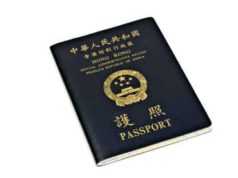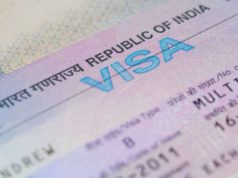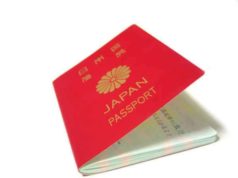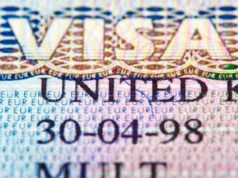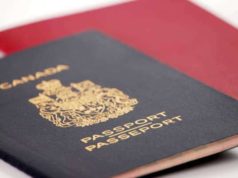
The Schengen Visa: A Convenient Solution for Travel in Europe
Europe has always been a popular holiday destination for people across the world because of its rich culture, history, and breathtaking scenery. With the increasing ease of international travel and rising affordability of airline tickets, more and more visitors from all corners of the world are flocking to Europe.
Among the many challenges of traveling to Europe is the requirement of a visa. However, the Schengen Visa has made things much more convenient and hassle-free for travelers. In this article, we will look at the Schengen Visa in detail, including its history, requirements, and benefits.
What is the Schengen Visa?
The Schengen Visa is a short-term visa that allows its holder to enter and travel within the Schengen Area. The Schengen Area is a zone that comprises of 26 European countries that have abolished border checks on their internal borders, allowing free movement of people and goods. This gives travelers the opportunity to visit multiple countries on a single visa, without the need for individual visas for each country.
The 26 countries in the Schengen area include Austria, Belgium, Czech Republic, Denmark, Estonia, Finland, France, Germany, Greece, Hungary, Iceland, Italy, Latvia, Liechtenstein, Lithuania, Luxembourg, Malta, Netherlands, Norway, Poland, Portugal, Slovakia, Slovenia, Spain, Sweden, and Switzerland.
History of the Schengen Visa
The concept of the Schengen Agreement originated in the 1980s as a means of facilitating travel within Europe. The agreement was signed in 1985 by five of the then European Union member states (France, Germany, Belgium, Luxembourg, and the Netherlands) in the town of Schengen, Luxembourg.
The agreement aimed to eliminate border checks and controls between the signatory countries. It also paved the way for a common visa policy that streamlined the visa application process for travelers. The Schengen Agreement was later incorporated into EU law and expanded to include additional member states.
Schengen Visa Types
The Schengen Visa is divided into three different categories depending on the purpose of travel:
1. Schengen Visa for Tourism
If the primary purpose of travel is tourism, applicants can apply for a Schengen Visa for tourism. It allows travelers to visit multiple countries within Schengen Area for a period of up to 90 days. This type of visa is the most common and is suitable for travelers planning a holiday or leisure trip.
2. Schengen Visa for Business
This visa is intended for business travelers who would like to visit the Schengen area for work-related purposes, such as attending conferences and meetings, or exploring business opportunities. The visa permits the holder to stay for up to 90 days in a 180-day period.
3. Schengen Visa for Medical Treatment
The Schengen Visa for medical treatment is issued to travelers who require medical treatment within the Schengen Area. The visa allows the holder to stay for up to 90 days within a six-month period.
Schengen Visa Requirements
To apply for a Schengen Visa, applicants must meet the following requirements:
1. Valid passport
Applicants must have a valid passport that is not older than ten years and that has a validity of at least three months beyond the intended stay in the Schengen Area.
2. Travel itinerary
Applicants must provide a detailed travel itinerary, including flight details, accommodation information, and an itinerary of activities.
3. Health insurance
Applicants must have valid travel health insurance that covers medical emergencies and repatriation for the duration of their stay. The policy should have coverage of at least €30,000.
4. Proof of funds
Applicants must provide proof of sufficient funds to cover the cost of their stay in the Schengen Area. This can be in the form of bank statements, credit card statements, or proof of sponsorship.
5. Purpose of travel
Applicants must provide documents that support the purpose of their visit, such as an invitation letter from a Schengen country resident or a conference invitation.
6. Biometric data
All applicants must submit their biometric data, including fingerprints, at the visa application center.
Schengen Visa Application Process
The application process for the Schengen Visa is straightforward. The following are the steps:
1. Determine the type of visa required and the duration of stay, as well as which countries within the Schengen Area the traveler intends to visit.
2. Obtain (or download) the application form from the embassy website of the Schengen country through which the traveler intends to enter the zone.
3. Submit the application form and required documents to the visa application center (VAC) or consulate of the intended entry country. It may also be possible to submit the application online.
4. Schedule a biometric appointment at the VAC, which must be attended in person.
5. Pay the visa fee, which varies depending on the duration of the visa, among other factors.
6. Wait for the processing of the visa application. This can take up to 15 working days from the date of the biometric appointment.
Schengen Visa Fees
The cost of a Schengen Visa varies depending on the consulate or embassy and the type of visa required. Currently, the fee is €80 for adults and €40 for children under the age of 12.
The fee is non-refundable, and payment must be made at the time of submitting the visa application. Certain travelers, such as minors, students, and researchers, may be eligible for a reduced fee.
Benefits of the Schengen Visa
The Schengen Visa has several benefits, making it an attractive option for travelers. These benefits include:
1. Convenience and flexibility
One of the significant advantages of the Schengen Visa is the ability to visit multiple countries on a single visa. Travelers can plan their itinerary accordingly, without the need for individual visas for each country.
2. Cost-effective
The Schengen Visa can be more cost-effective than obtaining individual visas, particularly when visiting multiple countries. It may also be a more affordable option compared to applying for visas to other countries outside the Schengen Area.
3. Time-saving
The Schengen Visa application process is streamlined and simplified, with a standard set of requirements. This means that the processing time for visa applications is generally quicker, allowing travelers to plan their itinerary without delay.
4. Greater Mobility
Having a Schengen Visa can give travelers greater mobility within the Schengen Area. With free movement of people within the Schengen Area, travelers who have a Schengen Visa can enjoy more flexible travel plans.
Conclusion
The Schengen Visa has revolutionized the convenience of travel and made it possible for travelers to explore multiple countries within the Schengen area. With its streamlined visa application process and cost-effective pricing, the Schengen Visa is an attractive option for tourists and business travelers alike.
As the world continues to recover from the challenges of the pandemic, international travel will soon become possible again. Those who are considering a trip to Europe should consider applying for a Schengen Visa to take advantage of its many benefits and explore all that the continent has to offer.
1. First of all, it should be discussed to where the Schengen visa does not apply, or where an international visa might be needed in addition to a check of a passport and other documentation. As indicated elsewhere, the United Kingdom, Romania, Bulgaria, Cyprus and Ireland all have disagreed with Schengen regulations in some form or another so that visas for transport into these countries may be required for residents of select countries.
2. Residents of some countries, notably the United States of America, do not need visas for unrestricted travel through the Schengen area. The total list of countries that do not require a international visa to travel between Schengen countries numbers more than 30, and the onus is on the individual to verify whether he or she is on the list of exempt countries.
3. Visas for travel inside the Schengen area, therefore, apply to those countries who are not passport holders of the group to which countries like the United States belong. The Schengen international visa lasts for up to ninety days of use, and can only be used for ninety days within a 180-day period. Though it likely goes without saying, visas for the Schengen area are to be used only for travel, not to establish permanent residency.


